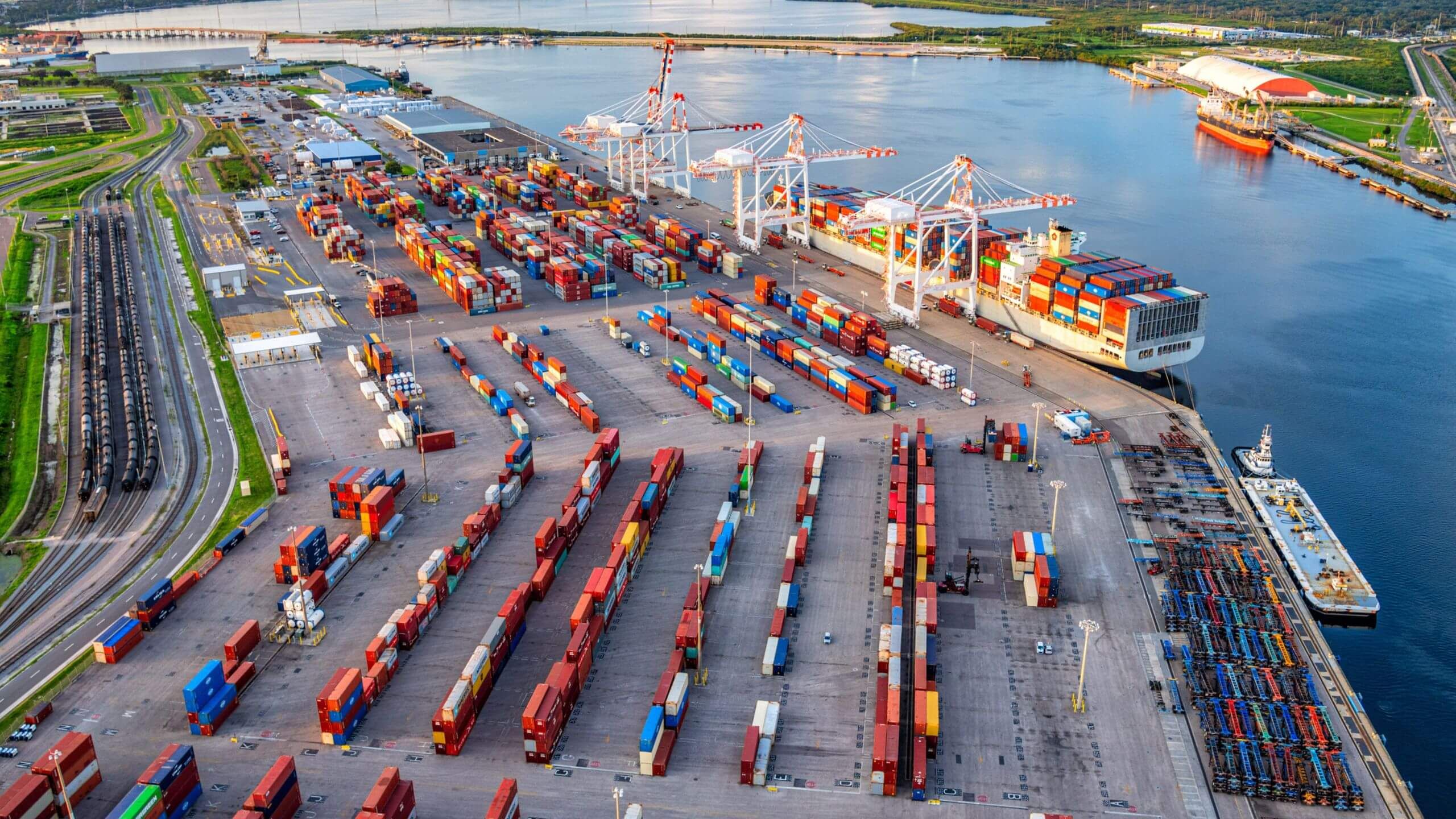Inflation is no longer a temporary shock — it’s a sustained assault on the transportation and logistics industry’s already razor-thin margins. Every ancillary service not sold, is a direct hit to the bottom line. Fuel and labor rates have climbed, service expectations have soared, and the complexity of contracts, surcharges, and delivery commitments has multiplied.
But here’s the truth: what if I told you that the logistics industry doesn’t have a cost problem. Rather, it has a pricing discipline problem.

A Silent Killer: Manual Pricing and Quoting
In a market defined by volatility, complexity, and rising expectations, outdated pricing models and manual quoting practices are quietly draining profit. Rate cards are static. Quotes are built in spreadsheets. Approval processes are slow. And worst of all, margin visibility is often nonexistent at the point of sale. These non-standard, and non-centralized processes have caused organizations to struggle to manage thousands of different contract types, with every customer having their own rate structure. It’s not only a nightmare to manage and keep oversight of, but also not an efficient way to scale.
While logistics leaders continue to focus on operational cost-cutting like optimizing routes, consolidating loads, and automating warehouses, they often overlook the commercial engine that drives profitability. Manual pricing and quoting aren’t just outdated; they’re strategic liabilities.
Too often, rate cards are static. Quotes are built in spreadsheets. Approval processes are slow. Margin visibility is non-existent at the time of quote. And every special request or contract negotiation kicks off a round of back-and-forth that delays deal closure and increases the likelihood that the customer walks.
These inefficiencies aren’t just inconvenient. They’re costly. Every delay in the quoting process risks losing the deal. Every one-size-fits-all rate undermines profitability. Every manual override creates margin leakage. And in today’s climate, margin leakage is a problem no logistics company can afford.
Instead, every service-price needs to be specifically curated to the needs of the account, leveraging market data and insights to help make better, faster decisions.
The eCommerce Effect Is Here and It’s Not Going Away
Logistics companies are no longer just serving procurement managers and freight buyers. They’re increasingly selling to tech-savvy customers, or shippers who’s end customers have a digital-first mind set and expect the same speed, transparency, and responsiveness they get from consumer brands.
That shift is fundamentally changing how logistics companies must operate. It’s not just about moving goods anymore. It’s about delivering a frictionless buying experience.
Customers expect instant answers. They want pricing optimized to their needs. And they want to know that what they’re paying reflects real value—not an arbitrary markup or a delayed quote generated after three rounds of internal approvals.
How Smarter Pricing and CPQ Are Changing the Game
Forward-thinking T&L providers are responding with a new playbook, centered around smarter pricing and faster quoting. Modern Configure, Price, Quote (CPQ) systems and price optimization tools are enabling companies to:
- Quote faster, with higher accuracy removing bottlenecks and shortening sales cycles
- Price based on real-time cost data and customer value not flat, outdated rates or guesswork
- Improve win rates and protect margin with guided selling and intelligent deal structures
- Scale efficiently even as services become more customized and complex
With AI-driven pricing engines and integrated CPQ solutions, logistics companies can quote in minutes instead of days. They can ensure every quote reflects true cost-to-serve. And they can give sales teams, and customers, confidence that pricing is both competitive and sustainable.
-Mark Davis, Vice President, Pricing, Averitt
Sector Deep Dives: Where Pricing and Quoting Are Breaking and How to Fix It
While the pricing and quoting challenge cuts across the T&L industry, its impact, and opportunity, shows up differently across modes. Here’s how smarter pricing and CPQ can reshape the game in key segments:
Air Cargo: Overcoming Volatility with Real-Time Agility
Air cargo has always been prone to volatility, but the pandemic and its aftermath have brought extreme swings in capacity, demand, and rates. As markets normalize, many carriers and forwarders are still relying on legacy contracts and static pricing tools that can’t respond to rapid shifts in cost (like fuel surcharges) or market demand.
This creates inefficiencies in managing capacity constraints, navigating complex rate structures (per kilo, per piece, fuel, security), and handling manual spot pricing, which often erodes margins and slows response times.
Meanwhile, unpredictable shocks like U.S. import tariff changes and geopolitical tensions are reshaping the capacity landscape. Shippers are rushing freight ahead of tariff deadlines, while closed airspace forces last-minute route changes. These disruptions demand agility that legacy RM forecasting tools simply can’t deliver.
That’s where PROS comes in. Our Capacity-Aware Optimization is a breakthrough in revenue management science that was purpose-built for transport and logistics. It generates bid prices directly from historical and real-time booking patterns, enabling dynamic, data-driven pricing that adapts to volatile demand.
Challenges:
- Capacity constraints and demand volatility
- Complex rate structures (per kilo, per piece, fuel, security)
- Manual spot pricing that erodes margin and slows response time
Opportunity:
PROS solutions enable air cargo providers to:
- Dynamically adjust prices to reflect real-time capacity and cost
- Automatically apply complex surcharges and service rules
- Accelerate spot pricing with fast, accurate responses
- Improve quote consistency across channels (sales, digital, GSA)
-Florent Bonello, VP, Cargo Revenue Management and Pricing, Qatar Cargo
FTL (Full Truckload): Winning Speed-to-Quote in a Hypercompetitive Market
In full truckload, speed often wins the deal. Brokers and carriers that respond first with accurate, competitive pricing are more likely to secure the load. But when quoting relies on tribal knowledge or slow back-office processes, opportunities slip through the cracks. Rising driver and equipment costs further intensify margin pressures, while outdated systems make it difficult to align pricing with real-time operating conditions.
Challenges:
- Margin pressure from increased driver and equipment costs
- Fragmented quoting and booking tools
- Difficulty aligning price to real-time operating conditions
Opportunity:
PROS intelligent commerce tools can help FTL providers:
- Generate quotes instantly, even for customized requirements
- Incorporate real-time lane data, fuel trends, and driver availability
- Surface preferred pricing rules and constraints automatically
- Protect margin with embedded guardrails on discounts and rates
- Generate a real-time price based on key market context and attributes
LTL (Less-Than-Truckload): Navigating Complexity at Scale
The less-than-truckload (LTL) segment is defined by its complexity. Pricing involves a web of base rates, accessorials, weight breaks, NMFC classifications, and destination zones. Despite this, many LTL providers continue to rely on static tariffs and manual processes, which fail to account for real-time costs or customer segmentation. This reliance on outdated methods leads to inefficiencies, fragmented margins, and slow response times.
Challenges:
- High operational complexity and fragmented margins
- Manual rating and tariff interpretation
- Slow customer response times due to quote complexity
Opportunity:
Modern CPQ and pricing tools can help LTLs:
- Automate rate calculations, including accessorials and fees
- Customize and optimize pricing tiers based on account profiles and agreements
- Reduce quote turnaround time from hours to minutes
- Ensure consistent quoting across reps and systems
- Prevent margin leakage with pricing governance with constraints to protect the bottom line
- Configure co-loading and compatibility rules, to ensure that minimum capacity is wasted
3PLs: Differentiating Through Speed, Flexibility, and Intelligence
3PLs sit at the intersection of modes and shippers, which means they must quote quickly across services while protecting slim margins. When quoting spans air, ground, warehousing, and cross-border moves, speed and accuracy become essential to win (and keep) business.
Challenges:
- Highly variable margins across services and carriers
- Disjointed quoting tools that don’t scale
- Pressure to offer flexible, tailored services without margin erosion
Opportunity:
Smart quoting and pricing platforms allow 3PLs to:
- Build unified quotes across multiple services and geographies
- Compare carrier pricing in real time and apply markup rules
- Automate approval workflows and flag margin risk
- Offer eCommerce-like quoting portals to digital-first customers
- Ensure price optimization and management across all touchpoints
Railroads: Unlocking Profit with Configured Services and Smarter Rates
While often considered slower to evolve, the rail industry, particularly in intermodal, bulk freight, and carload services, is under increasing pressure to modernize. Traditional contracts and multi-year rate agreements often fail to reflect current costs, while quoting for bespoke services, such as transloading or storage-in-transit, remains inefficient and manual. These challenges are further compounded by complex service offerings, network constraints, and inflexible legacy systems.
Challenges:
- Complex service offerings and network constraints
- Inflexible legacy systems for rate building
- Lack of visibility into cost-to-serve or margin per move
Opportunity:
Modern CPQ and pricing solutions enable railroads to:
- Configure complex services dynamically with embedded business logic
- Adjust pricing based on volume, demand, or network congestion
- Improve customer responsiveness while enforcing pricing rules
- Support intermodal growth with fast, multi-modal quotes
Precision Beats Speed — But Having Both Wins the Market
Across all segments of transportation and logistics, the message is clear: the old ways of pricing and quoting can’t support the demands of a volatile, margin-sensitive market. Manual workarounds, slow processes, and disconnected tools are costing companies more than just efficiency. They’re also impeding growth.
Transportation and logistics companies that treat pricing and quoting as growth enablers will be better positioned to compete, win, and thrive. Even in an environment defined by volatility and rising costs.
It’s time to leave behind the spreadsheets and static rate cards. By adopting smarter pricing strategies and CPQ technologies tailored to their unique operational realities, T&L providers can unlock faster sales cycles, higher win rates, and better margin control. All while delivering a more responsive and modern experience to customers.
So, what’s your quoting speed today, and what’s it costing you?
Take Action Now: Evaluate your pricing and quoting maturity. Are your prices optimized and margin-aware? Are your quotes fast and accurate? If not, it’s time to modernize. Contact PROS today to learn more about how we can help you make pricing and quoting a competitive advantage today.

